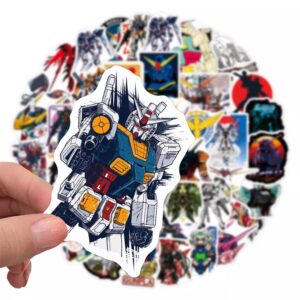Dungeons and Dragons (D&D) is a tabletop role-playing game (RPG) that involves creating characters, exploring fictional worlds, and engaging in fantasy battles. In D&D, players create characters with different skills, abilities, and weapons, and engage in quests and adventures that are guided by a game master (GM).
In D&D, weapons are an essential part of combat and gameplay. Players must carefully choose their weapons based on their character’s abilities and goals, as well as the adversaries they may face. Weapons can deal different types of damage, have different ranges, and require different levels of proficiency to use effectively.
In this article, we will explore the best martial weapons in D&D. Martial weapons are those that require proficiency in martial weapons to use effectively, and include both melee and ranged weapons. We will provide detailed information and statistics on each weapon, as well as their advantages and drawbacks. Whether you’re a player or a GM, our guide will help you choose the best martial weapons to give you an edge in your next campaign.
Melee Weapons

Melee weapons are those used for close combat and can be divided into one-handed and two-handed weapons. Here, we will be discussing the best one-handed and two-handed melee weapons in D&D, along with their damage statistics, benefits, versatility, and drawbacks.
Longsword
As a versatile and reliable weapon, the longsword has been a staple in D&D for quite some time. With a base damage of 1d8 and proficiency in martial weapons, the longsword can be used with one hand or two hands.
Damage statistics and benefits:
- A longsword deals slashing damage and has a range of 5 feet.
- A longsword is versatile, which means it can be used with one or two hands, increasing the damage output to 1d10 when used with two hands.
- It is an excellent weapon for characters with high strength and dexterity stats.
Versatile use:
- Its versatility makes longsword an ideal weapon for players who want adaptability, whether they want to use it with a shield or dual-wield it with another weapon.
- A player can switch between one-handed and two-handed use depending on the situation and the type of enemy they’re facing.
Greatsword
The greatsword is another popular two-handed weapon in D&D with incredible damage output. Though it is slow and cumbersome, the greatsword has potential for massive damage and can be used effectively by strength-based characters with proficiency in martial weapons.
Damage output and versatility:
- A greatsword’s base damage is 2d6 when wielded with two hands, making it the highest damage dealing melee weapon in D&D.
- However, because of its size, it can only be used with two hands.
- It is ideal for characters with high strength stats.
Two-handed use and drawbacks:
- Using a greatsword with two hands means a player can’t use a shield or dual-wield with another weapon.
- The greatsword is heavy and cumbersome, making it difficult to maneuver and unwieldy in tight spaces.
Battleaxe
The battleaxe is a versatile and durable all-purpose weapon that can be used in one or two hands. It can deal large amounts of damage to a wide range of targets, making it an ideal weapon for a variety of situations.
Damage statistics and bonuses:
- The battleaxe deals slashing damage, and has a base damage of 1d8, which increases to 1d10 when wielded with two hands.
- The battleaxe has an additional +1 bonus against the foes of dwarves.
One-handed and two-handed use:
- The battleaxe can be used with one or two hands, as it is versatile.
- One-handed use gives players the opportunity to use a shield for added protection.
Overall, whether you choose the longsword, greatsword, or battleaxe, it’s essential to choose a weapon that best compliments your character’s abilities and backstory. Always keep in mind that weapon mastery is the key to domination in close combat, and for that reason, ongoing practice and experience is essential.
Ranged Weapons
Ranged weapons are an essential part of any adventurer’s arsenal, especially for players who prefer to attack from a distance. In Dungeons and Dragons, ranged weapons offer versatility and flexibility, allowing players to take down enemies from afar. Here are the three best ranged weapons in D&D.
Longbow
The Longbow is one of the most iconic ranged weapons in D&D, with a long and storied history as a weapon of war. It is an excellent weapon for those who want to attack enemies from a distance, and it’s ideally suited for players who want to specialize in long-range combat.
Damage statistics and benefits:
- The longbow has a base damage of 1d8, which increases to 1d10 if wielded with two hands.
- It deals piercing damage and has a range of 150/600, making it an excellent option for long-range combat.
- It is ideal for characters with high dexterity stats, as it requires proficiency in martial weapons.
Range and accuracy:
- Longbows are incredibly accurate, making them an ideal option for sniping foes from a distance.
- They also have a substantial range, which means that players can deal damage to enemy targets from afar with ease.
- The range of the longbow also makes it an excellent tool for scouting and gathering information from a distance.
Shortbow
While not as powerful as the longbow, the shortbow is a versatile and reliable weapon that is well suited to a variety of combat situations. It is an excellent weapon for players who want to engage in hit-and-run tactics and guerrilla warfare.
Damage output and versatility:
- The base damage of the shortbow is 1d6, which isn’t as much as the longbow, but is still significant.
- Shortbows are versatile, which means that players can use them with one hand or two hands depending on their preference.
- They are ideal for characters with high dexterity stats, as they require proficiency in martial weapons.
Stealth benefits:
- Shortbows are lightweight and easy to maneuver, making them a popular choice for stealth-based characters who want to remain hidden.
- They are quiet and unobtrusive, which makes them ideal for characters who want to engage in hit-and-run tactics.
- They are also an ideal weapon for players who want to take advantage of cover and concealment in order to gain a tactical advantage over their enemies.
Crossbow
For players who want raw damage output and ranged accuracy, the Crossbow is an ideal choice. It is a slow and cumbersome weapon, but it can deal an enormous amount of damage in a single shot, making it a powerful weapon in the right hands.
Damage statistics and drawbacks:
- The crossbow has a base damage of 1d8, which is slightly lower than the longbow.
- However, the crossbow benefits from increased accuracy and a lack of strength requirement, making it ideal for characters with high dexterity stats who may not have high strength.
- The big drawback of the crossbow, however, is that it is laborious to reload, which means that players can only make one attack per round.
Versatile use:
- The crossbow is versatile, which means that players can use it with one hand or two hands depending on their preference.
- It is ideal for characters who want to focus on ranged combat and who don’t mind sacrificing speed for accuracy.
- It is also an excellent weapon for players who want to deal massive amounts of damage to tough enemies, or for taking out enemies at range who are too fast to catch in melee combat.
Overall, each ranged weapon in D&D offers its own unique set of benefits and drawbacks, and the best weapon for you will depend on your character, your combat style, and your overall party composition. Keep that in mind when choosing which weapon to wield, and remember that weapon mastery is the key to dominating enemies from a distance.
Unconventional Martial Weapons
While swords and bows may be the go-to weapons of many D&D players, unconventional martial weapons can offer unique advantages in combat. In this section, we’ll explore three unconventional weapons that can bring a new level of diversity to any player’s arsenal.
Whip
The whip is a flexible weapon with a long history in both combat and entertainment. It is an ideal weapon for characters who want to strike from a distance while still having a degree of control over their opponent’s movements.
Damage statistics and bonuses:
- The whip deals 1d4 slashing damage, which is lower than many other weapons.
- However, the whip has the finesse property, which means that characters can use their Dexterity instead of their Strength when making attack rolls with it.
- The whip is also a reach weapon, which means that it has a longer range than most other melee weapons.
Reach and versatility:
- The whip’s long range makes it ideal for characters who want to engage in hit-and-run tactics, as they can strike from a distance and then quickly move away from their opponent.
- The whip’s flexibility also makes it an ideal tool for grappling and restraining enemies, as it can wrap around a target’s body and restrict their movements.
- Finally, the whip can be an intimidating weapon, as the noise it makes when it strikes can create fear and panic in foes.
Warhammer
The warhammer is a powerful weapon that can deal devastating blows to armored foes. It is an excellent choice for characters who want to deal significant damage while also having a weapon that can withstand punishment.
Damage output and versatility:
- The warhammer deals 1d8 bludgeoning damage, which is significant against heavily armored foes who may have resistance to other types of damage.
- The warhammer can also be used with one hand or two hands, making it versatile in combat.
- Finally, the warhammer is classified as a simple weapon, which means that characters who are not proficient in martial weapons can still use it with ease.
Bludgeoning damage benefits:
- The bludgeoning damage dealt by the warhammer is ideal for destroying inanimate objects, such as doors and walls.
- It can also be useful for stunning enemies, as blunt force trauma can cause dizziness and disorientation.
- Finally, characters who use warhammers can capitalize on any weaknesses in their opponents’ armor, dealing massive damage to joints and weak spots that other weapons may not be able to reach.
Morningstar
The morningstar is a spiked, ball-shaped weapon that can deal both piercing and bludgeoning damage. It is an excellent choice for characters who want a weapon that can deliver a diverse range of attacks.
Damage statistics and drawbacks:
- The morningstar deals 1d8 piercing damage, as well as 1d8 bludgeoning damage if wielded with two hands.
- However, the morningstar is classified as a martial weapon, which means that characters without proficiency may suffer penalties when wielding it.
- Furthermore, the morningstar can be difficult to use effectively against heavily armored foes, as the spikes may become lodged in the armor instead of dealing damage.
Piercing and bludgeoning damage benefits:
- The piercing damage dealt by the morningstar is ideal for penetrating armor and dealing damage to vital organs.
- The bludgeoning damage, meanwhile, can be useful for stunning enemies or destroying inanimate objects.
- Finally, the morningstar’s spikes can deal additional damage against targets with vulnerabilities, such as undead or creatures with exoskeletons.
Overall, unconventional martial weapons can offer unique advantages in combat, and players who think outside the box may find themselves with a significant edge over their foes. While they may not be as popular or universally useful as traditional weapons, these unconventional weapons can bring a new level of diversity and strategy to any D&D game.
Conclusion

In conclusion, understanding the best martial weapons in Dungeons and Dragons can make or break a combat encounter. With the right weapons, characters can deal massive damage, control the battlefield, and emerge victorious against even the toughest foes.
Recap of the Best Martial Weapons
- Longsword: A versatile weapon that deals significant damage and can be used with one or two hands.
- Greatsword: A two-handed weapon that deals massive damage but can be cumbersome in combat.
- Battleaxe: A versatile weapon with bonuses against certain types of foes.
- Longbow: A powerful ranged weapon with excellent accuracy and a long range.
- Shortbow: A stealthy ranged option for characters who want to remain hidden while attacking.
- Crossbow: A powerful ranged option that can deal significant damage but is slower to reload.
- Whip: A flexible, long-range weapon that is useful for grappling and restraining enemies.
- Warhammer: A bludgeoning weapon that can deal massive damage against heavily armored foes.
- Morningstar: A spiked weapon that deals both piercing and bludgeoning damage, making it useful in a variety of situations.
Tips for Using These Weapons in Game
- Choose your weapons based on your character’s strengths and weaknesses, as well as the needs of your party. A well-rounded party should have a mix of melee and ranged options, as well as different damage types.
- Consider the environment and terrain when choosing your weapons. A longsword may be useful in an open field, but a morningstar may be better suited for underground tunnels.
- Take advantage of bonuses and special abilities associated with your weapons. For example, a battleaxe’s bonus against certain types of foes could make all the difference in a combat encounter.
- Use Stealth and range effectively with weapons like the shortbow and the whip, as they lend themselves to hit-and-run tactics and controlling the battlefield.
- Combine the use of weapons with utility spells, to maximize the effect in combat.
Additional Considerations and Recommendations
While the weapons above are some of the best martial weapons in D&D, they are by no means exhaustive. There are plenty of other weapons available to players, each with their own unique benefits and drawbacks. Additionally, each class is specialized in certain weapon types, so choosing weapons that fit with your character’s class and abilities can be a strong strategy.
Finally, before choosing your weapons, don’t forget to speak with your DM. They may have additional rules or restrictions in place, and may be able to offer guidance or advice on which weapons are best suited for your character and the campaign setting as a whole.












